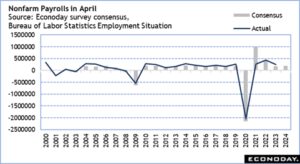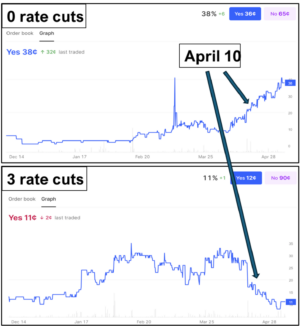Key takeaways
Federal Reserve
Fed Chair Jay Powell said that the Fed believes we are at or near peak rates for this cycle and that additional hikes are unlikely.
European Central Bank
ECB President Christine Lagarde said future decisions will ensure that rates “will be set at sufficiently restrictive levels for as long as necessary.”
Bank of England
BOE Governor Andrew Bailey said that the bank could resume monetary tightening if inflationary pressures prove to be more persistent than expected.
The central bank trifecta — the US Federal Reserve (Fed), the European Central Bank (ECB), and the Bank of England (BOE) — all held interest rates steady at their meetings last week. But while their actions were the same, they sent very different messages to markets, with the Fed sounding less hawkish than its central bank counterparts and less hawkish than I expected.
The Fed makes small but significant changes to its communications
In last week’s blog, I mistakenly assumed all three of these central banks would be privately pivoting in December but staying hawkish publicly. While the ECB and BOE did stay hawkish publicly — their mantra was “sufficiently higher for sufficiently longer” — we got a very different message from the Fed.
It started with the Summary of Economic Projections — also known as the “dot plot.” You may recall the dot plot from the September Federal Open Market Committee (FOMC) meeting, which showed an implied 50 basis points in cuts for 2024, was a negative shock to markets after the June dot plot showed an implied 100 basis points in cuts for 2024. That was the start of a significant climb for the 10-year US Treasury yield in September. Well last week, the Fed backtracked somewhat from its hawkish September projection: The December dot plot shows an implied 75 basis points in cuts for 2024. In my view, that’s definitely more realistic than September’s estimate, although I think the June dot plot will prove to be even more accurate.
There was also a small but important change to language in the announcement.1 The Fed added the word “any” to this sentence: “In determining the extent of any additional policy firming…” In other words, it’s very unlikely that we will see any more rate hikes. During the Q&A portion of his press conference, Powell was asked about the inclusion of the word “any” to that statement, and he confirmed that view. He called it an acknowledgement that the Fed believes we are at or near peak rates for this cycle and that additional hikes are unlikely.
ECB and BOE strike a hawkish tone
Powell’s comments were quite different from the comments made by ECB President Christine Lagarde and BOE Governor Andrew Bailey.
- Lagarde said future ECB decisions will ensure that rates “will be set at sufficiently restrictive levels for as long as necessary.” The ECB recognized that the current level of interest rates, if left at that level for “a sufficiently long duration,” would “make a substantial contribution” to bringing inflation back to target.2
- Bailey noted that rates have to be “sufficiently restrictive for sufficiently long” for inflation to fall to the BOE’s target rate, adding that the bank could resume monetary tightening if inflationary pressures prove to be more persistent than expected.3
Markets have taken their lead from the Fed
Markets are clearly listening to Powell, placing far more importance on his words than those coming from the ECB, BOE, and the Bank of Canada (which also held rates steady at its December meeting.) Markets are also ignoring the chorus of FOMC members who have come out in recent days in an attempt to walk back the view that a pivot has occurred.
However, the proverbial horse has already left the barn with Powell’s statements last week — which, I must remind, follows a similar sentiment articulated by ECB Executive Board member Isabel Schnabel the week before, “When the facts change, I change my mind.…The most recent inflation number has made a further rate increase rather unlikely….The recent inflation print has given me more confidence that we will be able to come back to 2% no later than 2025.“4
As such, last week we saw the continuation of a wild ride for US Treasury yields. You may recall that the 10-year US Treasury yield reached its peak in mid-October, touching 5%, after some hotter-than-expected jobs and inflation-related data.5 However, it started to ease after a less hawkish November FOMC meeting, followed by data showing progress being made on disinflation. A dovish speech in late November by Fed Governor Chris Waller helped push yields even lower. The most recent leg down for the 10-year US Treasury yield, which sent it below 4%, came from last week’s FOMC decision and press conference.5
As a result of falling yields, risk assets have rallied. The focus of headlines has largely been on equities and how well they have performed, as the MSCI ACWI Equity Index rose more than 2.5% last week.5 Real estate has been overlooked although performance has been even stronger. Global real estate investment trusts (REITs) posted strong gains for last week, with the MSCI ACWI Real Estate Investment Trust Index gaining 5.3%.5 That shouldn’t be surprising given the impact that rates can have on REITs.
All roads leading to 2024 rate cuts?
So how to make sense of the different messages from Western developed central banks? I think of it this way: All these central banks are like buses headed to the same destination. Some left earlier, some are traveling faster, some are on windy or bumpy roads — and some bus drivers are overcommunicating in their announcements to passengers. But as I see it, they’re all headed the same direction and to the same destination: Disinflation will continue, rate hikes are over, and rate cuts will likely start for all of them in the first half of 2024.
Now that doesn’t mean we have perfect policy clarity — because we don’t. I expect there to be periods of policy uncertainty, which can cause volatility for yields and various asset classes, but I do anticipate a generally positive global risk appetite as we head into 2024 given the monetary policy environment. Learn more about our outlook for next year.
Happy Holidays!
Today marks my last Weekly Market Compass for 2023, returning the week of Jan. 8. I wish you and yours a happy holiday season and a wonderful New Year!
—
Originally Posted December 18, 2023
Central banks hold steady but send different messages to markets by Invesco US
Important information
NA3289665
All investing involves risk, including the risk of loss.
Past performance does not guarantee future results.
Investments cannot be made directly in an index.
This does not constitute a recommendation of any investment strategy or product for a particular investor. Investors should consult a financial professional before making any investment decisions.
Should this contain any forward looking statements, understand they are not guarantees of future results. They involve risks, uncertainties, and assumptions. There can be no assurance that actual results will not differ materially from expectations.
In general, stock values fluctuate, sometimes widely, in response to activities specific to the company as well as general market, economic and political conditions.
Investments in real estate related instruments may be affected by economic, legal, or environmental factors that affect property values, rents or occupancies of real estate. Real estate companies, including REITs or similar structures, tend to be small and mid-cap companies and their shares may be more volatile and less liquid.
The Federal Reserve’s “dot plot” is a chart that the central bank uses to illustrate its outlook for the path of interest rates.
The Federal Open Market Committee (FOMC) is a 12-member committee of the Federal Reserve Board that meets regularly to set monetary policy, including the interest rates that are charged to banks.
A basis point is one hundredth of a percentage point.
Disinflation, a slowing in the rate of price inflation, describes instances when the inflation rate has reduced marginally over the short term.
Inflation is the rate at which the general price level for goods and services is increasing.
Hawkish is to favor relatively higher interest rates if they are needed to keep inflation in check.
Tightening monetary policy includes actions by a central bank to curb inflation.
Risk assets are generally described as any financial security or instrument that carries risk and is likely to fluctuate in price.
The MSCI All Country World (ACWI) Equity Index is an unmanaged index considered representative of large- and mid-cap stocks across developed and emerging markets.
The MSCI ACWI REITs Index is a free float-adjusted market capitalization index that captures large and mid cap representation across 23 developed and 24 emerging markets countries.
The opinions referenced above are those of the author as of Dec. 18, 2023. These comments should not be construed as recommendations, but as an illustration of broader themes. Forward-looking statements are not guarantees of future results. They involve risks, uncertainties and assumptions; there can be no assurance that actual results will not differ materially from expectations.
Disclosure: Invesco US
This does not constitute a recommendation of any investment strategy or product for a particular investor. Investors should consult a financial advisor/financial consultant before making any investment decisions. Invesco does not provide tax advice. The tax information contained herein is general and is not exhaustive by nature. Federal and state tax laws are complex and constantly changing. Investors should always consult their own legal or tax professional for information concerning their individual situation. The opinions expressed are those of the authors, are based on current market conditions and are subject to change without notice. These opinions may differ from those of other Invesco investment professionals.
NOT FDIC INSURED
MAY LOSE VALUE
NO BANK GUARANTEE
All data provided by Invesco unless otherwise noted.
Invesco Distributors, Inc. is the US distributor for Invesco Ltd.’s Retail Products and Collective Trust Funds. Institutional Separate Accounts and Separately Managed Accounts are offered by affiliated investment advisers, which provide investment advisory services and do not sell securities. These firms, like Invesco Distributors, Inc., are indirect, wholly owned subsidiaries of Invesco Ltd.
©2024 Invesco Ltd. All rights reserved.
Disclosure: Interactive Brokers
Information posted on IBKR Campus that is provided by third-parties does NOT constitute a recommendation that you should contract for the services of that third party. Third-party participants who contribute to IBKR Campus are independent of Interactive Brokers and Interactive Brokers does not make any representations or warranties concerning the services offered, their past or future performance, or the accuracy of the information provided by the third party. Past performance is no guarantee of future results.
This material is from Invesco US and is being posted with its permission. The views expressed in this material are solely those of the author and/or Invesco US and Interactive Brokers is not endorsing or recommending any investment or trading discussed in the material. This material is not and should not be construed as an offer to buy or sell any security. It should not be construed as research or investment advice or a recommendation to buy, sell or hold any security or commodity. This material does not and is not intended to take into account the particular financial conditions, investment objectives or requirements of individual customers. Before acting on this material, you should consider whether it is suitable for your particular circumstances and, as necessary, seek professional advice.
























Join The Conversation
If you have a general question, it may already be covered in our FAQs. If you have an account-specific question or concern, please reach out to Client Services.